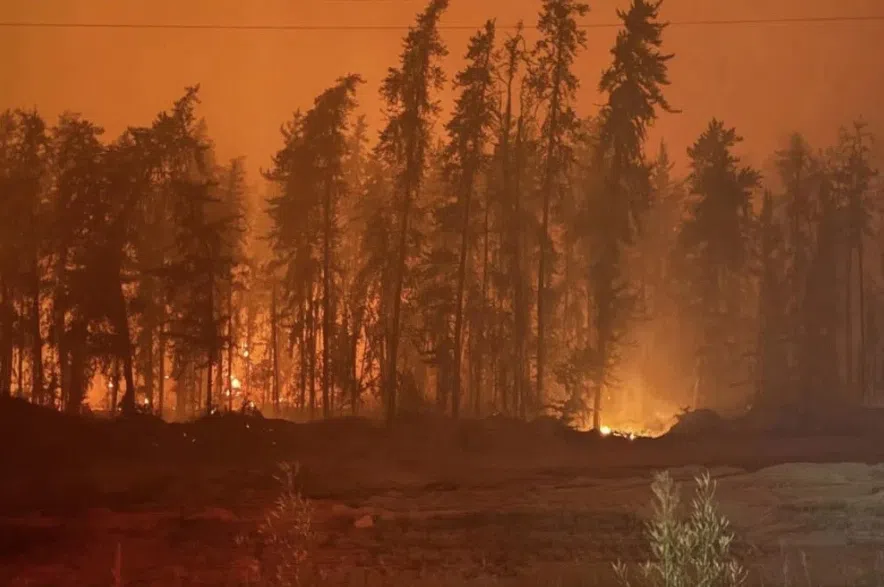The impact of wildfires in northern Saskatchewan can be felt in the southwest and west-central areas of the province on Tuesday.
Environment Canada has issued an air quality warning that extends as far west as the Alberta border, as far south as the US border, and as far east as roughly the middle of the province.
Areas under that warning include Saskatoon, Swift Current, Leader, Davidson, North Battleford and Prince Albert. Regina is not covered by the warning as of Tuesday morning. Meteorologist Jason Knight said pockets of dense smoke are sitting in place.
“It’s been light northerly winds for the last day or so from those fires up in the La Ronge area, and unfortunately, now there’s almost no airflow in the southwest corner, so the dense smoke is mostly just sitting there today.”
Read more:
- Wildfire now in Prince Albert National Park one of 55 burning in Saskatchewan
- Volunteer firefighters brave Muskeg Fire to save homes in Beauval
- Sask. wildfire smoke triggers air quality warning for Saskatoon
As of 5 a.m. on Tuesday, Knight said Saskatoon had some of the worst air quality in the province at a rating of 10+, or very high risk.
Knight said there should be a general trend of improvement with the smoke over the next 24 hours in the southwest corner of the province.
“We don’t expect that smoke to move too much today, hopefully, we are expecting a little bit of improvement throughout the day, but with a fairly stagnant flow for at least another day, we’ll be seeing those air quality warnings continue for a while yet in the province.”
He said they already noticed some improvement with the wildfire smoke overnight.
“The last plume of smoke that was lingering south of Trans Canada Highway is actually pushing into the US now, so it’s moving more toward the western sections of the province and out of the Regina area.”
How do I find out my local air quality reading?
Environment Canada’s air quality index can be found here.
You can take a look at the ratings in communities across your province or territory.
A rating of 1-3 is low risk, 4-6 is moderate risk, 7-10 is high risk and over 10 is very high risk.
The risk designations can change regularly in the same community, Environment Canada says, so it’s important to keep checking the air quality forecast.
What do the risk ratings mean?
Environment Canada, in consultation with Health Canada, has different recommendations for people especially at risk of suffering health problems when exposed to poor air quality compared to the general population.
“At risk” people include those with respiratory issues such as asthma, chronic obstructive pulmonary disease (COPD), pneumonia, as well those with as heart disease. Infants, young children, pregnant people and elderly people are also considered at higher risk.
The government agency lists the various health conditions that put you at higher risk at this website.
Here’s how to interpret the Air Quality Health Index guidance:
“Low risk” means everyone can safely be outdoors.
“Moderate risk” means the general population doesn’t need to change their usual outdoor activities unless they have symptoms such as coughing and throat irritation. But people at risk should “consider reducing or rescheduling strenuous activities outdoors.”
“High risk” means those at risk should reduce or reschedule strenuous activities outdoors. Children and seniors should “take it easy.” The general population should consider reducing or rescheduling strenuous activities if they start coughing or their throats become irritated.
“Very high risk” means everyone should reduce or reschedule strenuous activities. People at risk should avoid outdoor activities altogether











